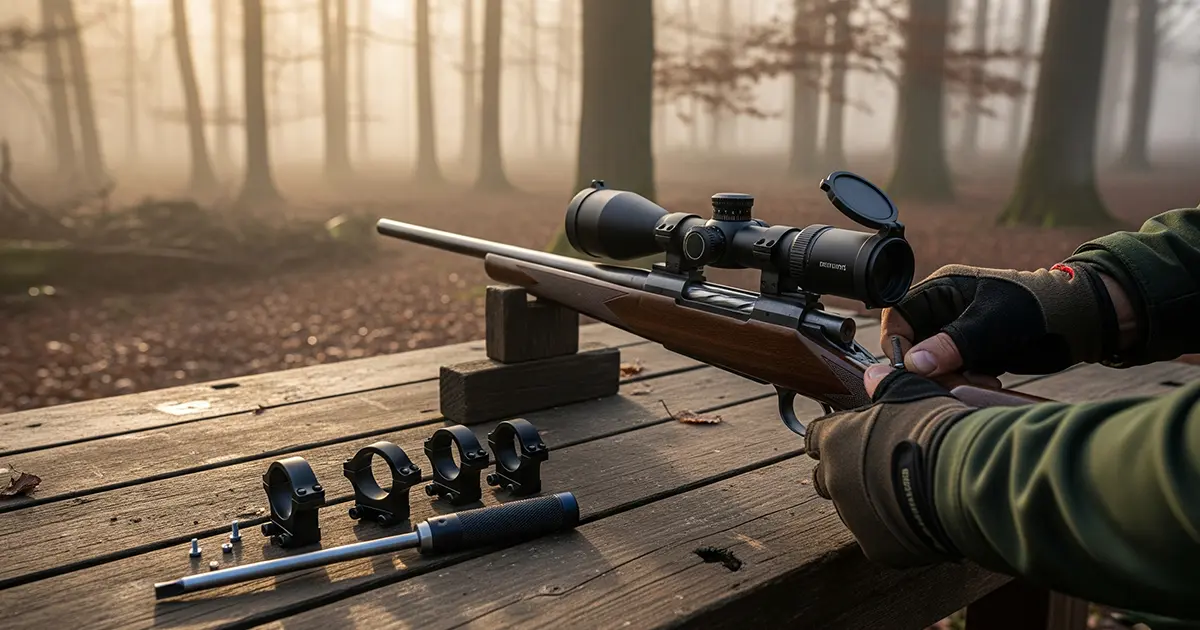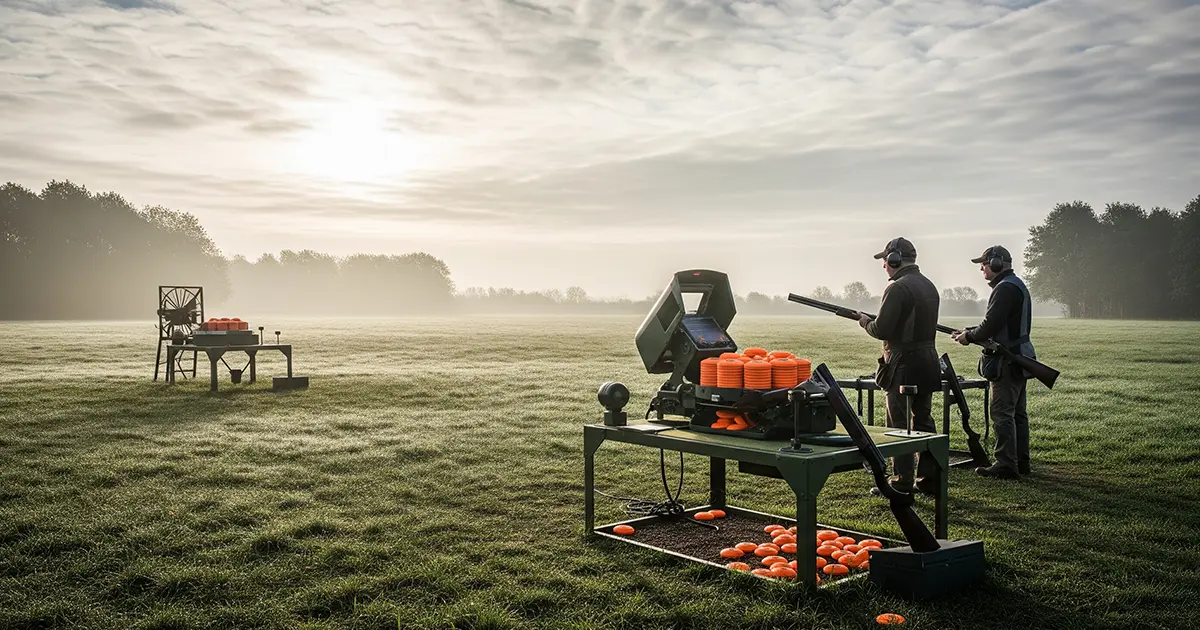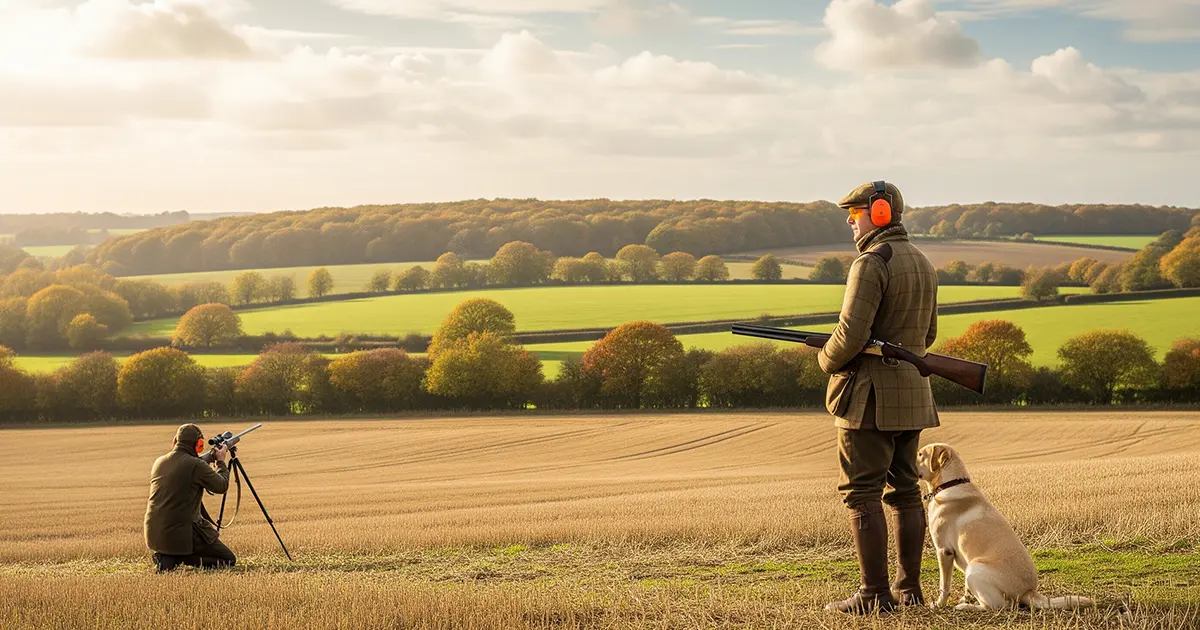Picking the right riflescope is part science, part experience. Get the fundamentals straight, then match them to your quarry or course of fire, your rifle, and the rules you shoot under. Below is a practical guide, grounded in UK disciplines and law, with clear tips you can use immediately.
“Scopes are tools, not talismans. Start with the job, not the brand, and you will almost always buy once and buy right.”
— David Bellamy, Managing Director, TIS Guns
Start with the discipline, not the zoom ring
- Deer stalking, low light woodland: a bright 2-10×42 or 3-12×50 with simple illuminated reticle. The image you see in low light is driven by exit pupil and glass quality, not the tube diameter. Exit pupil is objective diameter divided by magnification, larger values are easier on the eye at dawn and dusk. Typical night adapted pupils are roughly 5 to 7 mm in younger eyes and reduce with age. Wikipedia
- Foxing and vermin from a vehicle or sticks: similar magnification to stalking, spill-over to 4-16x if you shoot small targets past 200 metres. Prioritise robust tracking and dependable illumination rather than headline magnification.
- Civilian Service Rifle: if you enter Service Optic, your magnification is capped at 4.5x. Practical Optic has no magnification cap. Build within the class rules first. NRA
- Gallery Rifle and Long-barrelled pistol/revolver: both iron and optical sights are permitted, including telescopic and red dot, but not lasers that project onto the target. Red dots or 1-6x LPVOs are common.
- Clay shooting: ISSF shotgun rules specify plain bead type sights. Optical sights are explicitly prohibited. If you are shooting clay disciplines, spend your money on lessons, fit, and cartridges, not glass. backoffice.issf-sports.org
“Match the scope to the rulebook, then to the rifle, then to how you actually shoot on a wet Saturday in Lincolnshire. Doing it in that order saves money.”
— David Bellamy
Magnification, field of view, and eye relief
- Magnification: more is not always better. Higher power narrows field of view and makes position and wobble look worse. For UK stalking, most shots happen under 200 metres, so a mid-range hunting scope is usually perfect. Wikipedia
- Exit pupil and brightness: a 50 mm objective at 6x gives ~8.3 mm exit pupil, which is generous. For daytime general use, 3 to 4 mm is comfortable. The big lever for perceived brightness is coatings and glass, plus that exit pupil relationship, not the tube diameter.
- Tube size myth: a 30 mm or 34 mm main tube does not inherently give a brighter image. What larger tubes do reliably give you is more internal adjustment range and often tougher construction. Bushnell
- Eye relief: give yourself honest, recoil-safe eye relief, especially with light rifles. Typical scope eye reliefs are in the 70 to 100 mm region, much more than binoculars. Wikipedia
Reticles and turrets, what the numbers really mean
- MRAD vs MOA: both measure angle. One click on most mil scopes is 0.1 mrad, which moves impact 1 cm at 100 m. One MOA is about 1.047 inches at 100 yards. Choose the unit that matches your data and your mates’ spotting calls. NSSF
- FFP vs SFP: in first focal plane the reticle subtensions stay true at all magnifications, useful for holding and ranging. In second focal plane they are true only at the marked power, but the reticle stays a constant apparent size which many hunters prefer. vortexoptics.com, leupold.com
- BDC dials: custom or cartridge-marked dials are convenient, but they are tied to a specific ballistic profile and conditions. Expect small errors as distance and weather vary, then verify on steel. Wikipedia
Mounts and rails, getting the interface right
- Picatinny vs Weaver: both use cross slots, but Picatinny is a MIL-STD with consistent 5 mm slot width and spacing. Most Weaver rings fit Pic rails, the reverse is hit and miss. Evolution Gun Works
- Dovetails: rimfires and air rifles commonly have 11 mm or 3/8 inch dovetails which are not identical standards. Measure before you buy, and use rings designed for your specific rail, especially on CZ and BSA patterns. Optics Trade, sportsmatch-uk.com
- Torque, the silent killer of scopes: overtightening rings crushes tubes and shifts zero. Follow the optic and ring maker figures. Typical ring cap values are around 15 to 18 in-lb for many hunting scopes. Sportsmatch, as an example, lists 15 in-lb for cap screws and around 28 to 55 in-lb for clamps depending on model. vortexoptics.com
“We see more avoidable accuracy problems from poor mounting than from poor barrels. Set the rifle level, level the reticle, torque it properly, and half your gremlins vanish.”
— David Bellamy
UK law and competition rules you must respect
- Deer at night in England and Wales: it is an offence to take or kill deer at night except under licence from Natural England. There is an A16 licence route for night shooting in specific circumstances. Legislation.gov.uk, GOV.UK
- Use of night vision and thermal: daytime use of NV or thermal on deer rifles is not prohibited in England, Wales, and Scotland. Under a night licence, lamps or night-vision rifle scopes are allowed, but thermal is presently not allowed at night. In Northern Ireland, the Wildlife Order prohibits using night-sighting devices for deer at any time. Always check the latest local guidance before you plan a cull. BASC
- Discipline specifics: CSR Service Optic magnification capped at 4.5x, Practical Optic has no cap. GR&P explicitly permits telescopic and red dot sights but not pointing lasers. ISSF shotgun rules prohibit optical or electronic sights.
Practical setup that actually works
- Pick a sensible zero
- Stalking: 100 m true zero keeps holds simple.
- Foxing: 150 or 200 m zero if your terrain is flat and distances stretch.
- CSR: zero exactly as the match brief recommends, then verify on a tall target so your turrets track correctly. PrecisionRifleBlog.com
- Level everything
Level the rifle in a vice, level the mount, then the reticle. Bubble levels are not a fad, they are a cheap way to stop cant induced misses. - Confirm your clicks
Tape a metre-tall target at 100 m, dial exactly 10.0 mrad or 30.0 MOA and measure the shift. If it is off, note your real correction factor in your data card. - Set eye relief in position
Get behind the rifle in your real field position, not at the bench, and set the scope so the sight picture is full at your most used magnification. This prevents scope bite and avoids neck strain in the field. Wikipedia
Real-world build examples
- New stalker in Lincolnshire woodland
Rifle: light .308 or 6.5 with a 3-12×50, SFP duplex with daylight visible dot. Mount on quality Picatinny rings, torque correctly, and keep it simple. At 6x you still have a ~8.3 mm exit pupil, ideal for last light. Wikipedia - CSR competitor entering Service Optic
Rifle: 223 AR-pattern with a true 1-4x or 1-6x LPVO, capped turrets, reticle with a bold centre. Keep the top end at or under 4.5x to comply. Confirm holds at 100 and 300. - Gallery Rifle Smallbore
Rifle: 22 LR semi-auto with a non-parallax-fussy red dot or a compact 1-6x. Both are permitted, lasers that project to the target are not.
Buying once: what really matters
- Glass and coatings trump tube size for image quality. Large tubes give more adjustment and often stronger build, not free brightness. Bushnell, Wikipedia
- Mechanics matter: look for dependable tracking, tactile clicks, and a zero stop you understand. Be realistic about your budget, then put money into mounts and an hour of careful fitting. leupold.com
- Match your reticle to your data: if your notebook, spotter calls, and ballistic app are in mils, buy mil. If your world is in inches and yards, buy MOA. The goal is fewer conversions under pressure. Wikipedia, NSSF
How The Instinctive Shooter can help
- One to one scope fitting and zeroing: we mount, level, torque to manufacturer specs, confirm tracking on a tall target, and build your first data card so you leave ready to shoot. PrecisionRifleBlog.com
- Rule-aware recommendations: whether it is CSR at Bisley, GR&P, or a deer control contract, we will spec equipment that passes inspection and performs.
- Legal clarity: if you are considering NV or thermal, or applying for night licences, we can point you to the current Natural England guidance and BASC notes so your plan is correct before you buy. GOV.UK, BASC
Common Questions on Choosing the Right Scope
Do I Really Need a 30 mm or 34 mm Tube for Stalking?
Not for brightness. Tube diameter mostly affects adjustment range and durability. For woodland or hill stalking a quality 1 inch or 30 mm scope with good glass and coatings will serve you just as well as a heavier 34 mm model.
What Is the Best Magnification Range for UK Deer Stalking?
A 2-10x or 3-12x gives plenty of flexibility. Most shots are well inside 200 metres, so having a wide field of view and enough light at dawn and dusk is more useful than chasing very high magnification.
Can I Legally Use Thermal or Night Vision for Deer?
In England, Wales, and Scotland you can use thermal or digital night vision in daylight for deer, but night use requires a licence and thermal is not currently permitted under those licences. In Northern Ireland it is prohibited at any time. Always check the most recent guidance before you buy.
Why Do People Say Exit Pupil Matters More Than Objective Size?
Exit pupil is the objective diameter divided by the magnification. If it is larger than your eye’s pupil you are wasting light, if it is smaller your sight picture will dim. This is why a 6×42 can still be excellent at last light.
What Is the Difference Between MRAD and MOA?
Both are angular units. MRAD works in decimals and is popular in Europe, one click is usually 1 cm at 100 m. MOA is an older system based on minutes of angle, with one MOA being just over an inch at 100 yards.
Are Red Dot Sights Allowed in Gallery Rifle Competitions?
Yes, optical sights including red dots and telescopic scopes are allowed in most Gallery Rifle events. The only restriction is that pointing lasers which project onto the target are not permitted.
Why Do My Shots Go Off When I Dial Elevation but the Reticle Looks Level?
Often the scope was not mounted with the reticle plumb to gravity. Even a small amount of cant can throw shots sideways at distance, which is why careful levelling during mounting is essential.




